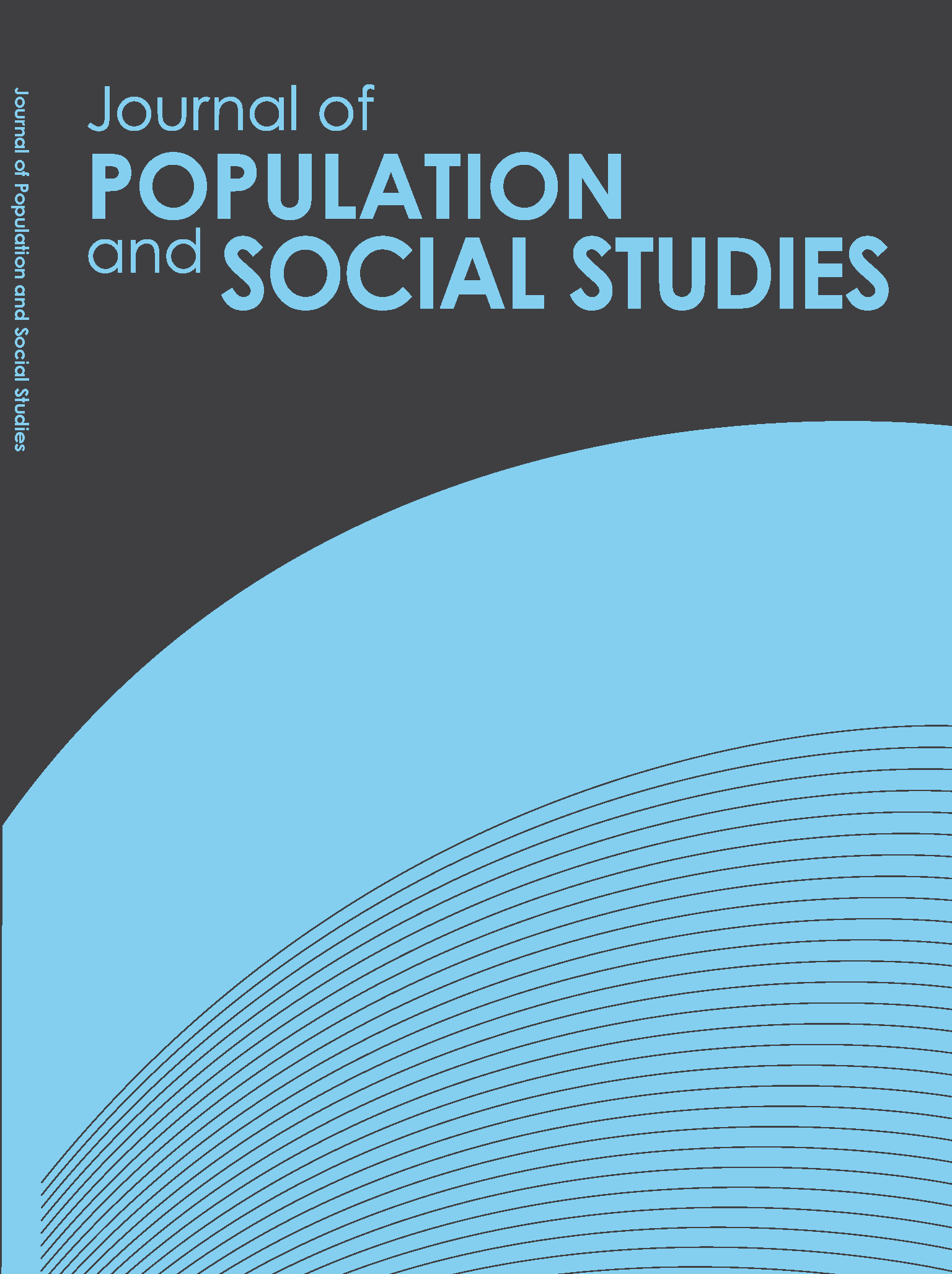Dynamic Life Tables for India and Some of Its Major States
Main Article Content
Abstract
The concept of dynamic life tables arises when the mortality experience of the period life table cohort does not remain the same. This idea was proposed first by Denton and Spencer (2011) and allows for the possibility of further decline in mortality in period life tables. Developing countries, like India, have also been experiencing continuous declines in mortality rates for more than two decades. As such, this examines the pattern of mortality and also the life expectancy of India and some of its selected states for the period 2006-2010 if the observed mortality rates changes over the previous 10, 25 and 50 years. This paper also formulates temporary life expectancy under dynamic consideration and thereby measures the change in dynamic life expectancy between two exact ages. Analysis shows that dynamic life expectancies at birth are higher in comparison to those observed through the typical procedure in India and the states under consideration. Interestingly, the effects of the dynamic calculations are mostly seen in older age groups, which can also be found from the dynamic temporary life expectancy for these age groups.
Article Details
References
Arriaga, E. E. (1984). Measuring and explaining the change in life expectancies. Demography, 21(1), 83-96. doi: https://doi.org/10.2307/2061029
Bell, F.C. & Miller, M. L. (2005). Life tables for the United States social security area 1900-2100. Actuarial Study 120. Washington, D.C.: Social Security Administration. Retrieved from https://www.ssa.gov/oact/NOTES/pdf_studies/study120.pdf
Bhat, P.N.M. (1987). Mortality in India: Levels, trends, and patterns. (Unpublished doctoral dissertation) University of Pennsylvania. Retrieved from http://repository.upenn.edu/dissertations/AAI8725140/
Bhat, P.N.M & Navaneetham, K. (1991). Recent trends in age specific mortality in India. Journal of Institute of Economic Research. 26 (1 & 2). Retrieved from https://www.ncbi.nlm.nih.gov/pubmed/12317585
Central Statistics Office. (2011). Situation analysis of elderly in India. New Delhi: Ministry of Statistics and Programme Implementation. Retrieved from http://mospi.nic.in/sites/default/files/publication_reports/elderly_in_india.pdf
Chaurasia, A.R. (2010). Mortality transition in India 1970-2005. Asian Population Studies. 6(1), 47-68.
Debon. A., Montes, F. & Sala, S. (2006). A comparison of models for dynamic life tables: Application to mortality data from the Valencia region (Spain). Lifetime Data Analysis, 12(2), 223-244. doi: https://doi.org/10.1007/s10985-006-9005-1
Denton, F. T. & Spencer, B. G. (2011). A dynamic extension of the period life table. Demographic Research, 24(24), 831-854. doi: https://doi.org/10.4054/demres.2011.24.34
Dubey, M. (2014). Trends and prospects of mortality by age and sex in India: 1991-2030. Retrieved from http://paa2014.princeton.edu/abstracts/141995
Dyson T. (2008). India’s demographic transition and its consequences for development. New Delhi: Institute of Economic Growth.
Kohli, K.L. (1977). Mortality in India: A state wise study. Sterling Publishers Pvt. Ltd.
Kuntla, S., Goli, S. & Jain, K. (2014). Explaining gender differentials in child mortality in India: Trends and determinants. International Journal of Population Research, 2014, 1-7. doi: https://doi.org/10.1155/2014/649741
Lee R.D. & Carter, L. R. (1992). Modelling and forecasting U.S. mortality. Journal of the American Statistical Association, 87 (419), 659-671. doi: https://doi.org/10.2307/2290201
Medina, S. (1996). Implementing a new indicator of social development in Mexico: Literate life expectancy (LLE). Laxenburg, Austria: International Institute of Applied System Analysis. Retrieved from http://pure.iiasa.ac.at/4924/1/WP-96-103.pdf
Navaneetham K. (1993). Mortality trends in India: An analysis of regional and temporal variations. Demography India, 22(1), 53-63.
Panigrahy R. L. (2006). Consequences of demographic transition in India. New Delhi: Discovery Publishing House.
Pollard J. H. (1988). On decomposition of changes in expectation of life and differentials in life expectancy. Demography, 25 (2), 265-276. doi: https://doi.org/10.2307/2061293
Registrar General of India. (1981-85, 1996-00, 1999-03, 2006-2010, 2009-13). SRS-based abridged life tables of India and the major states. New Delhi: Registrar General of India.
Registrar General of India. (1970-75, 2011, 2014). SRS Bulletins. New Delhi: Registrar General of India.
Richards, H. & Donaldson, M. (2010). Life and worklife expectancies. Tucson, Arizona: Lawyers and Judges Publishing Company, Inc.
Saikia, N., Jasilionis, D., Ram, F. & Shkolnikov, V. (2009). Trends in geographical mortality differentials in India. Retrieved from Max Plank Institute for Demographic Research website http://www.demogr.mpg.de/papers/working/wp-2009-013.pdf
Schoen R. & Canudas-Romo, V. (2005). Changing mortality and average cohort life expectancy. Demographic Research, 13, 117-142. doi: https://doi.org/10.4054/demres.2005.13.5
Singh A, Pathak P. K., Chauhan R. K. & Pan W. (2011). Infant and child mortality in India in the last two decades: A geospatial analysis. PLoS ONE 6(11), e26856. doi: https://doi.org/10.1371/journal.pone.0026856
Thomas, M. B. & James, K. S. (2014). Changing mortality and human longevity in Kerala: Are they leading to the advanced stages. Global Health Action, 7(1), 22938. doi: https://doi.org/10.3402/gha.v7.22938
United Nations. (2012). Changing levels and trends in mortality: The role of patterns of death by cause. New York: Department of Economic and Social Affairs, Population Division, United Nations Publication. Retrieved from http://www.un.org/esa/population/publications/levelsandtrendsinmortality/Changing%20levels%20and%20trends%20in%20mortality.pdf
UNICEF, World Health Organization, The World Bank & United Nations Population Division. (2014). Levels and trends in child mortality report 2014: Estimates developed by the UN inter-agency group for child mortality estimation. New York: UNICEF. Retrieved from https://www.unicef.org/media/files/Levels_and_Trends_in_Child_Mortality_2014.pdf
Yadav, S. & Arokiasamy, P. (2013). Causes of death and mortality transition in India. Retrieved from the International Union for Scientific Study of Population website https://iussp.org/sites/default/files/event_call_for_papers/Causes%20of%20Death%20and%20Mortality%20Transition%20in%20India_1.pdf
Yamunadevi, A. & Sulaja, S. (2016). Old age mortality in India: An exploration from life expectancy at age 60. International Journal of Asian Social Science. 6(12), 698-704. doi: https://doi.org/10.18488/journal.1/2016.6.12/1.12.698.704


